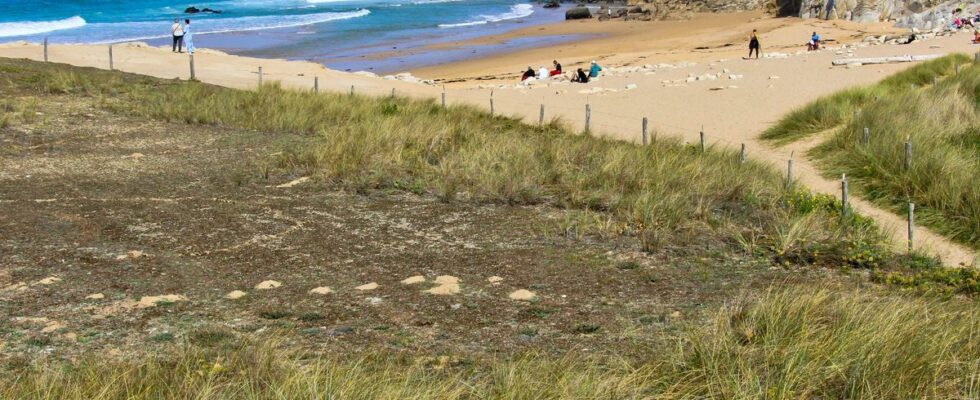In the sand, the locals saw the tracks of tractor tires. On the ground, pines cut, torn, as if a winter storm had devastated everything. Faced with the lack of communication, the inhabitants of Quiberon (Morbihan) did not really understand why the State decided to attack their yet protected dunes. On social networks, testimonies of anger have poured in at the desolate landscape left in the dunes of Plouharnel. “Dune ravaged over several hectares! It will take years to erase these traces of machines, ”criticizes a regular at the place. “A real massacre”, denounces another. The subject even invited himself to the table of the municipal council where an elected opposition member denounced “carnage” and asked for explanations, such as bring it back The Telegram. On the wild peninsula very popular with walkers and surfers, the locals do not mess with the environment.
“Communicated too late”
Those responsible for this straight cut are, however, fine connoisseurs of the natural environment. Manager of the site, the National Forest Office acknowledges having “communicated too late” to explain to the inhabitants the reasons for this slaughter as massive as sudden. “We had installed a few explanatory signs in the car parks but it was obviously too small”, slips Mickaël Ouisse. The Environment project manager at the ONF is nevertheless very knowledgeable on this subject, which he masters well. “The trees we cut were all under 30 years old. They had colonized the gray dune and threatened the special biodiversity of this remarkable site,” he explains.
This “grey dune” is a sand spit located between the beach and the forest. On 900 hectares, it walks from Fort Penthièvre to the Gâvres peninsula, near Lorient, constituting one of the largest reserves in Europe. Swept by the winds, it is home to rare wild flora, in particular small flowers that cling to its fragile soils. It is moreover to fight against the effects of the wind and to fix the sand that maritime pines had been planted en masse in this place after the Second World War. The objective was simple: to prevent the sand from the dune from covering the road and the railway line which criss-cross this narrow strip of land. “The problem is that the trees have swarmed and crossed the road to grow into the gray dune. The needles that settle on the ground prevent flowers and lichen from growing. We had to make a choice, ”assumes the ONF technician.
To identify the trees to be felled, its services relied on an aerial photo dating from 1991. “All the trees that were already there, we left them”, sums up Mickaël Ouisse. All the others have been cut, i.e. “several hundred maritime pines”. The smallest were only a few centimeters, the largest were not far from eight meters high. “Woodcutters often have a bad reputation. Here, it was essential if we wanted to preserve the dune and prevent the pines from colonizing everything”.

A choice that had to be explained in order to raise public awareness and avoid the flow of criticism. Amid the negative comments from locals, we found one that went against the grain and praised the work of the NFB. “Forestry is a skill. If an essence unbalances an environment, it must be changed”. Even if nature always ends up taking back its rights and it will probably be necessary to start the operation again in several years.

